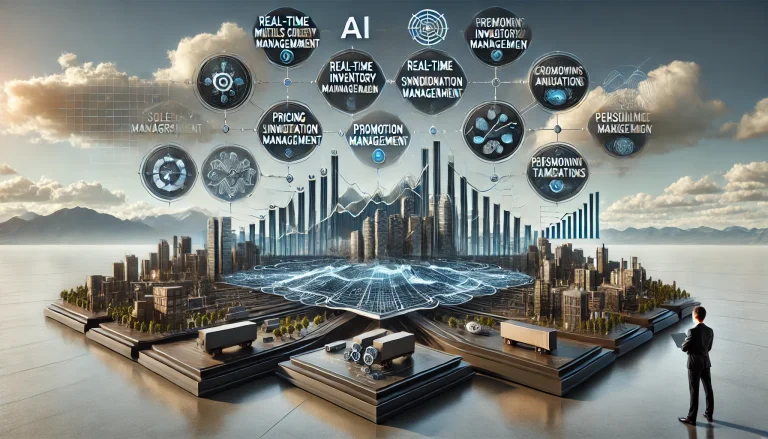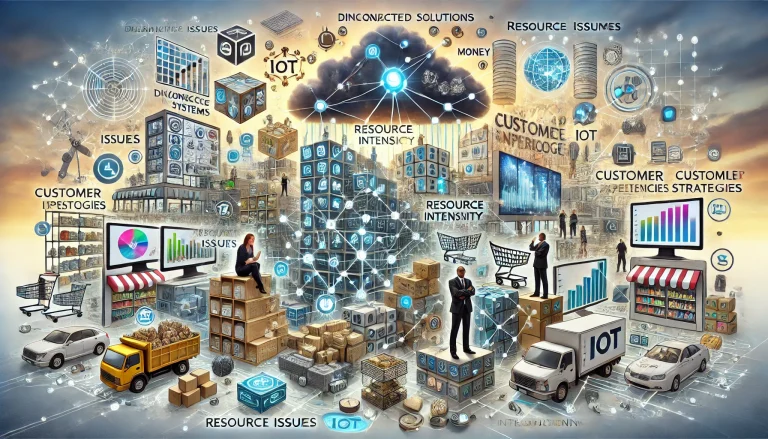Problem Statement Elaboration:
The retail industry is facing significant disruption due to the rapid growth of e-commerce. Consumers increasingly prefer the convenience, variety, and often lower prices offered by online shopping, leading to a decline in foot traffic for traditional brick-and-mortar stores. This shift has had severe consequences, including the closure of numerous physical stores, substantial job losses, and financial strain on retailers who have not yet adapted to the digital age.
To remain competitive, retailers need to innovate and adopt a digital-first approach. This includes integrating online and offline experiences, enhancing customer engagement through personalized marketing, leveraging data analytics for better decision-making, and optimizing supply chain and inventory management. However, many retailers lack the expertise and resources to implement these changes effectively.
Certainly, we can create a comprehensive platform to address the challenges faced by the retail industry due to the rise of e-commerce. Here’s how we will structure and generate the required information following the outlined path:
Pain Points
- Decreased Foot Traffic: Reduced customer visits to physical stores, impacting sales and revenue.
- Inventory Management: Difficulty in synchronizing stock levels across physical and online stores.
- Customer Engagement: Challenges in engaging customers who prefer the convenience of online shopping.
- Personalization: Lack of personalized shopping experiences compared to online platforms.
- Digital Expertise: Limited knowledge and resources to implement digital solutions.
- Cost of Transition: High costs associated with transitioning to a digital-first approach.
- Data Utilization: Ineffective use of data analytics to drive decision-making.
- Supply Chain Optimization: Difficulty in optimizing supply chain operations for efficiency.
- Competitive Pricing: Struggling to compete with often lower online prices.
- Marketing Reach: Limited reach compared to the broad audience of e-commerce platforms.

Future Vision
Our vision is to create a comprehensive platform that enables traditional retailers to seamlessly transition into the digital landscape. This platform will integrate online and offline shopping experiences, providing tools for inventory management, personalized customer engagement, data analytics, and modern payment solutions. By empowering retailers with these digital tools and support, we aim to rejuvenate the brick-and-mortar retail sector, ensuring they remain competitive in an increasingly digital marketplace.
Use Cases
- Seamless Inventory Management: Real-time synchronization of stock across online and offline stores.
- Personalized Shopping Experience: Leveraging customer data to offer tailored product recommendations.
- Omni-Channel Marketing: Integrated marketing campaigns across digital and physical channels.
- Customer Engagement Tools: Loyalty programs and personalized promotions to attract repeat customers.
- Digital Training Modules: Providing training resources for retailers to adapt to digital tools.
- Supply Chain Analytics: Optimizing supply chain operations with advanced analytics.
- Mobile Payment Solutions: Implementing modern and secure payment methods.
- Feedback Systems: Collecting and analyzing customer feedback for continuous improvement.
- Competitive Pricing Strategies: Tools for dynamic pricing to compete with online retailers.
- Community Building: Creating an online community for local customers to engage with the store.
Target Users and Stakeholders
Target Users:
- User: Retail store owners and managers
- Age Group: 30-60 years
- Gender: M/F
- Usage Pattern: Daily use for inventory management, customer engagement, and sales analytics.
- Benefit: Enhanced operational efficiency, increased customer retention, and improved sales performance.
Stakeholders:
- Retailers: Primary users benefiting from the platform’s features.
- Employees: Job retention through enhanced store performance.
- Customers: Improved shopping experience through personalized engagement.
- Investors: Financial stakeholders looking for a return on investment in the retail sector.
- Technology Providers: Partners providing digital tools and solutions.
Key Competition
- Shopify: Provides comprehensive e-commerce solutions including online store creation, inventory management, and marketing tools.
- BigCommerce: Offers scalable e-commerce platforms with advanced features for online and offline integration.
- Magento: A flexible e-commerce platform with robust customization options and extensive third-party integrations.
- Square: Combines point-of-sale systems with e-commerce solutions for seamless retail operations.
- Lightspeed: Provides cloud-based point of sale and e-commerce solutions tailored for retail businesses.
Products/Services
- Shopify: Online store setup, inventory management, payment processing.
- BigCommerce: E-commerce platform, omnichannel sales, advanced SEO tools.
- Magento: Customizable e-commerce solutions, extensive third-party integrations.
- Square: POS systems, online store setup, payment processing.
- Lightspeed: Cloud-based POS, e-commerce integration, inventory management.
Active Startups
- Veeqo: Inventory and shipping management for retailers.
- Brightpearl: Retail operations platform for inventory, order management, and accounting.
- Zinrelo: Loyalty rewards program for engaging customers.
- Vend: Cloud-based POS system with integrated inventory management.
- Springboard Retail: Retail management system for inventory and sales tracking.
- Bindo POS: iPad POS system with e-commerce integration.
- Erply: POS and inventory management software.
- ShopKeep: POS system for small businesses with e-commerce integration.
- RetailNext: In-store analytics for improving customer experience.
- Foko Retail: Retail communication and task management platform.
Ongoing Work in Related Areas
- Development of AI-driven personalized shopping experiences.
- Innovations in mobile payment solutions and digital wallets.
- Advanced analytics for supply chain optimization.
- Integration of augmented reality (AR) for immersive shopping.
- Blockchain technology for secure transactions and transparency.
- Enhancements in omnichannel retail strategies.
Recent Investment
- Shopify: $200 million investment in AI and machine learning (January 2024)
- BigCommerce: $150 million Series E funding for platform expansion (March 2024)
- Magento: Acquired by Adobe for $1.68 billion (May 2024)
- Square: $100 million investment in POS technology (February 2024)
- Lightspeed: $120 million in Series D funding for market expansion (April 2024)
Market Maturity
The market for digital retail solutions is maturing, with significant investments and innovations driving the industry forward. Retailers are increasingly adopting digital tools to enhance their operations and customer engagement, creating a competitive landscape that rewards technological advancement and customer-centric strategies.
Summary
The retail industry is undergoing a profound transformation driven by the rise of e-commerce. Traditional brick-and-mortar stores are struggling to compete with the convenience and variety offered by online shopping, leading to a decline in physical store traffic and closures. To address these challenges, we propose developing a comprehensive platform that integrates online and offline retail experiences. This platform will provide tools for inventory management, personalized customer engagement, data analytics, and modern payment solutions, empowering retailers to remain competitive in a digital-first world. By leveraging digital tools and support, we aim to revitalize the brick-and-mortar retail sector, ensuring its sustainability and growth in the future.


